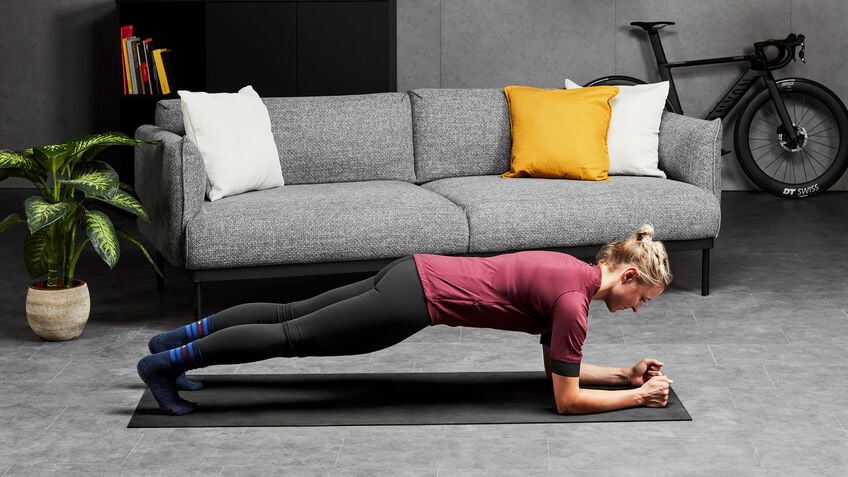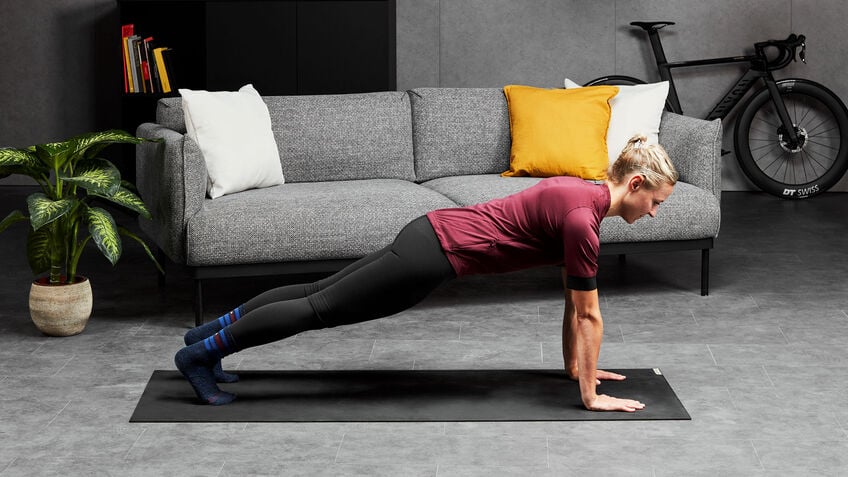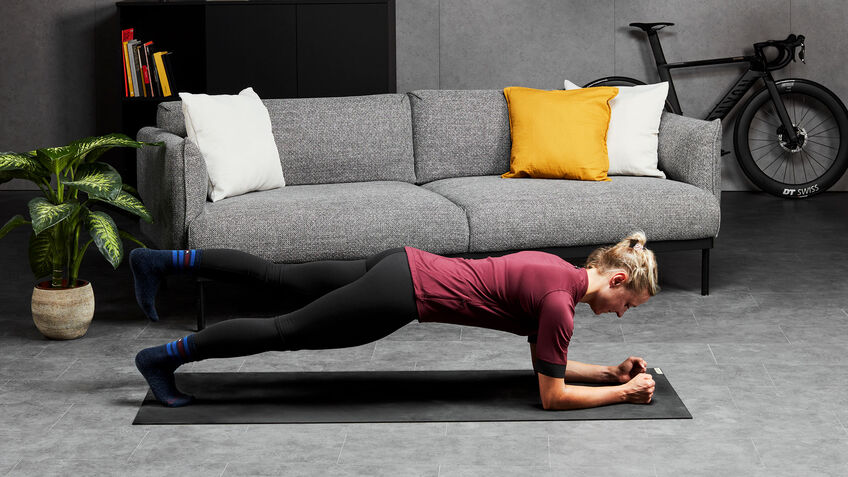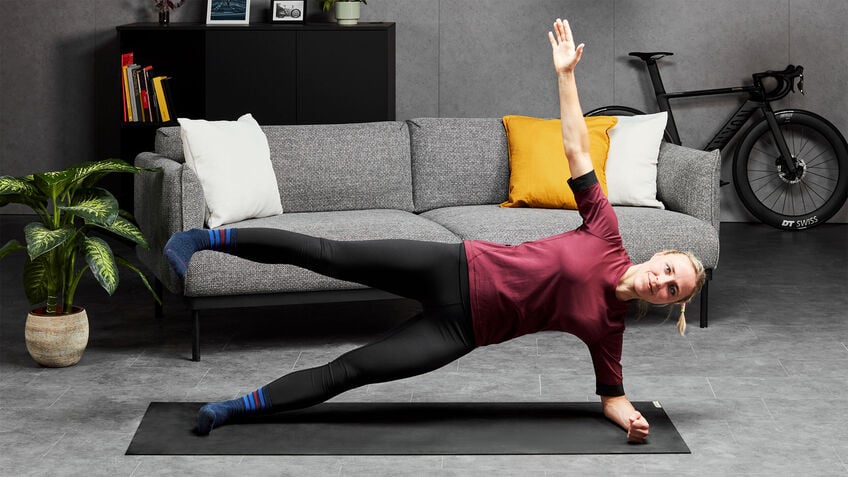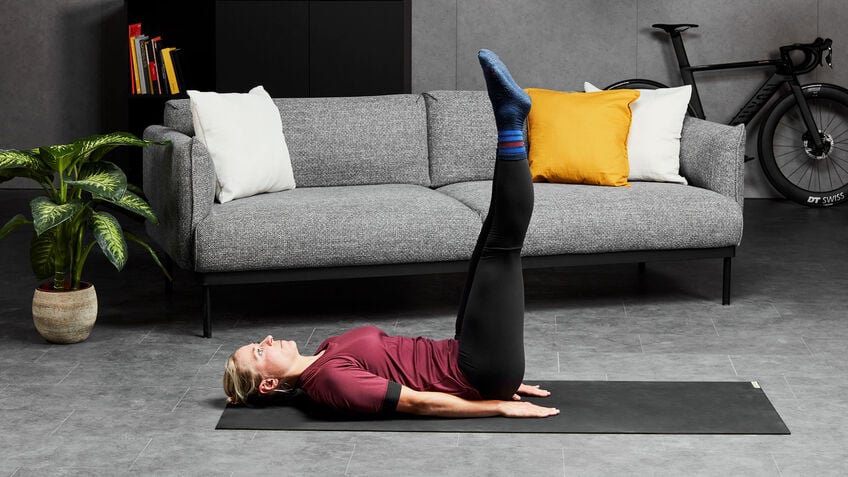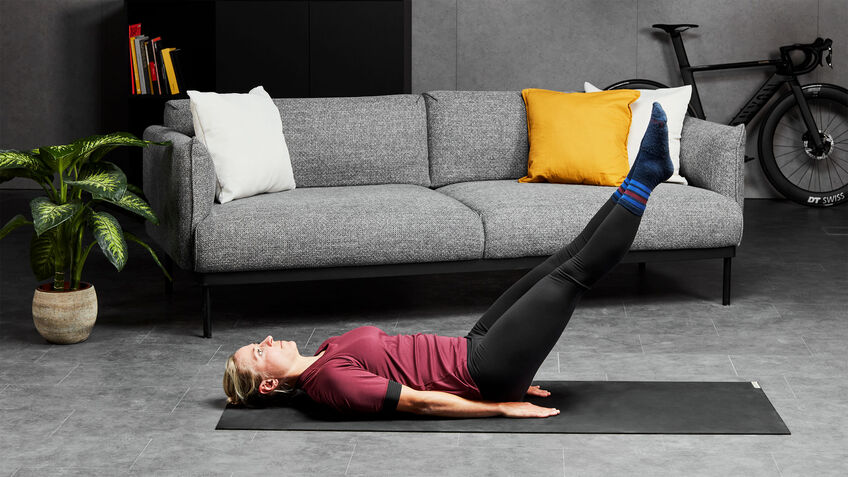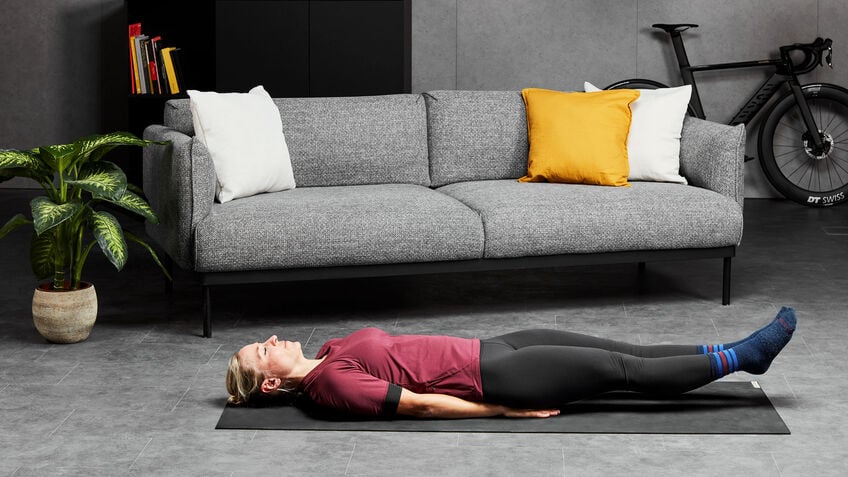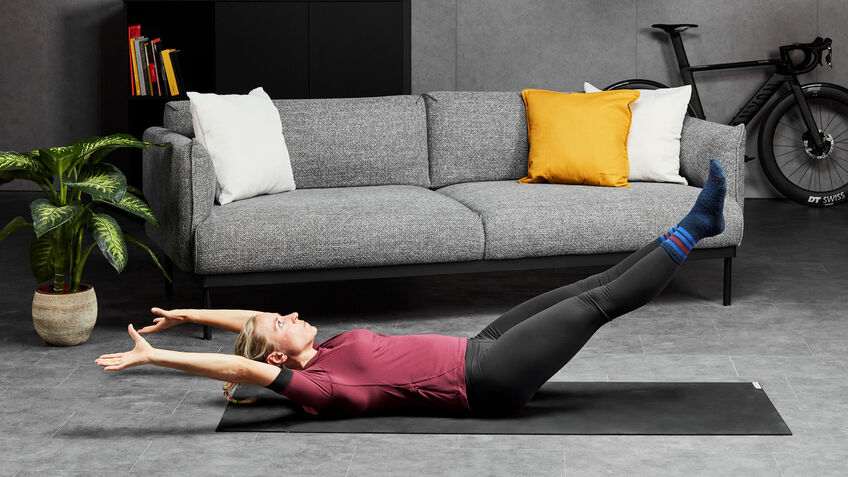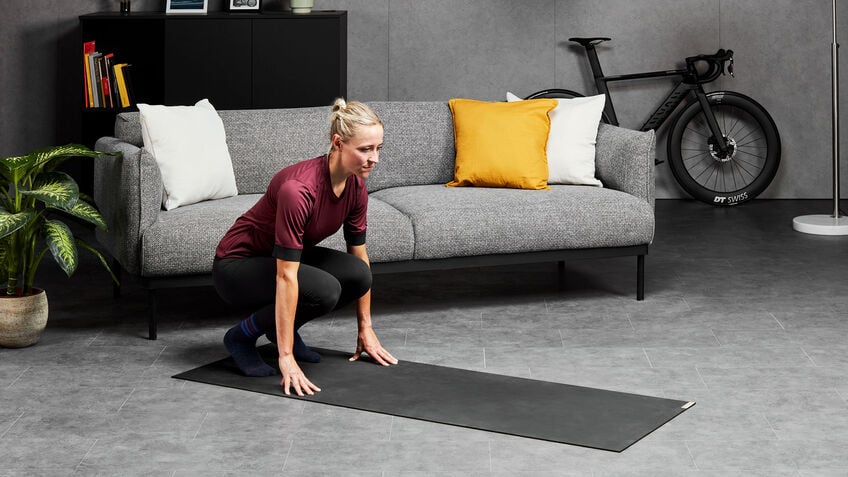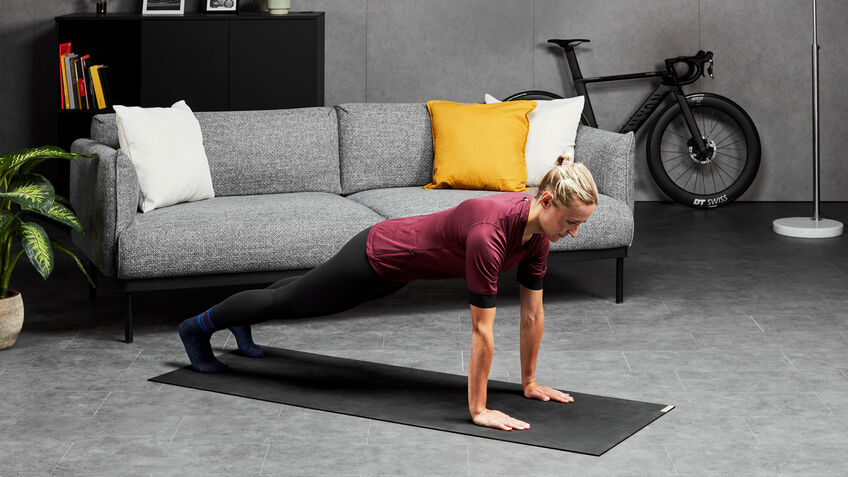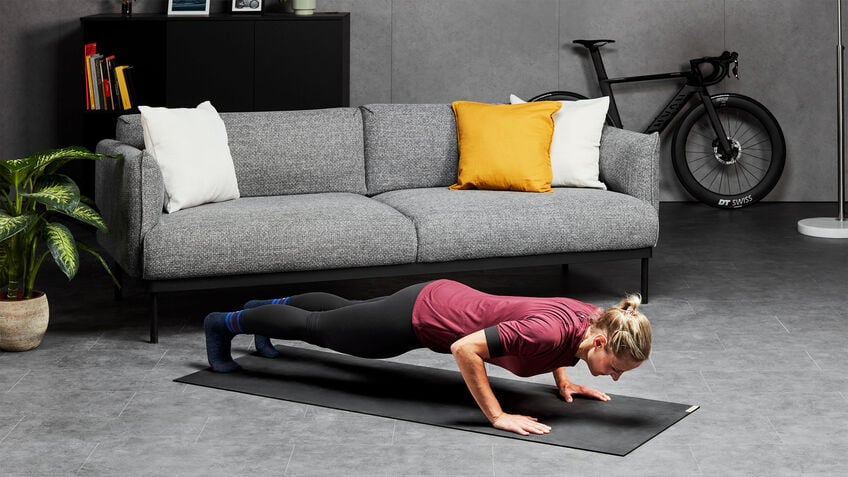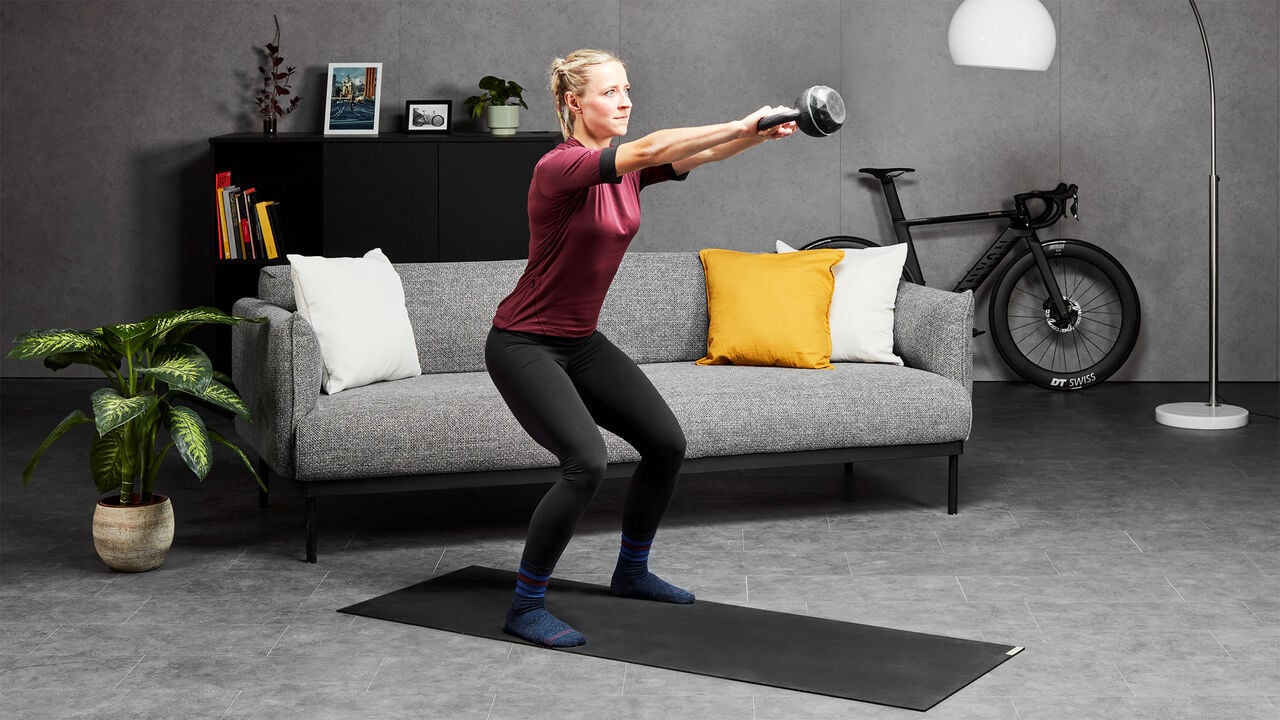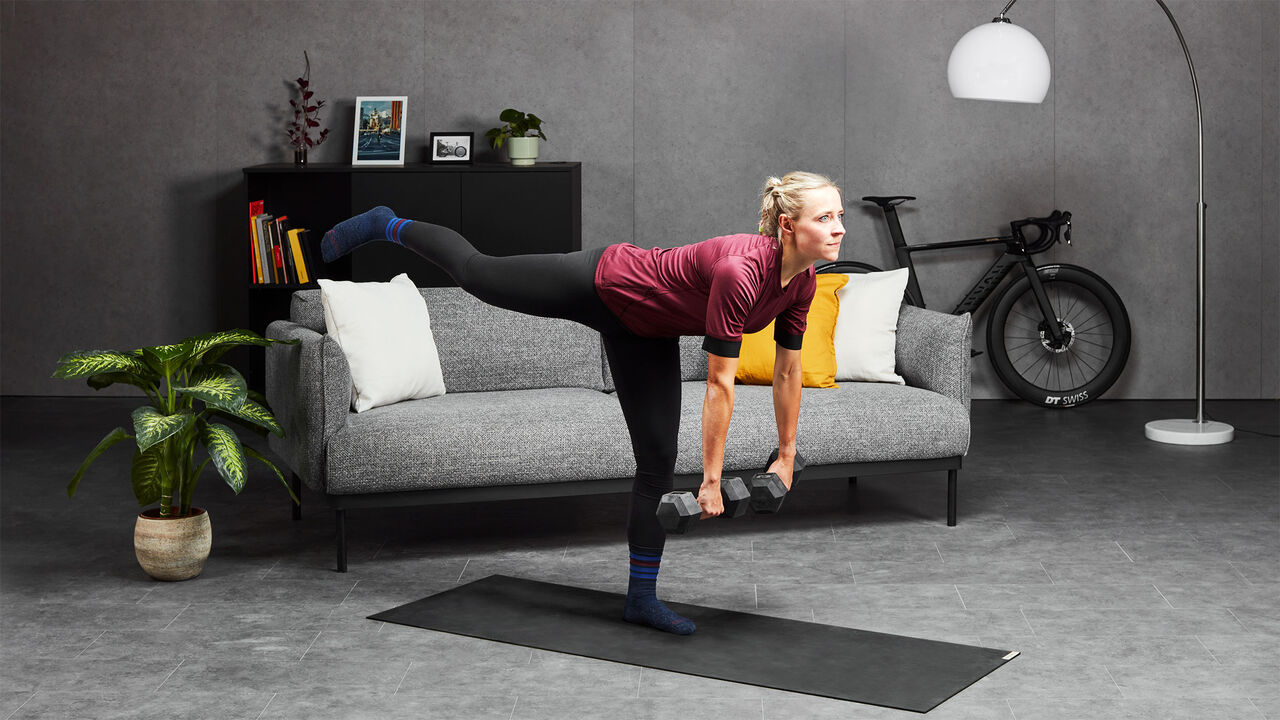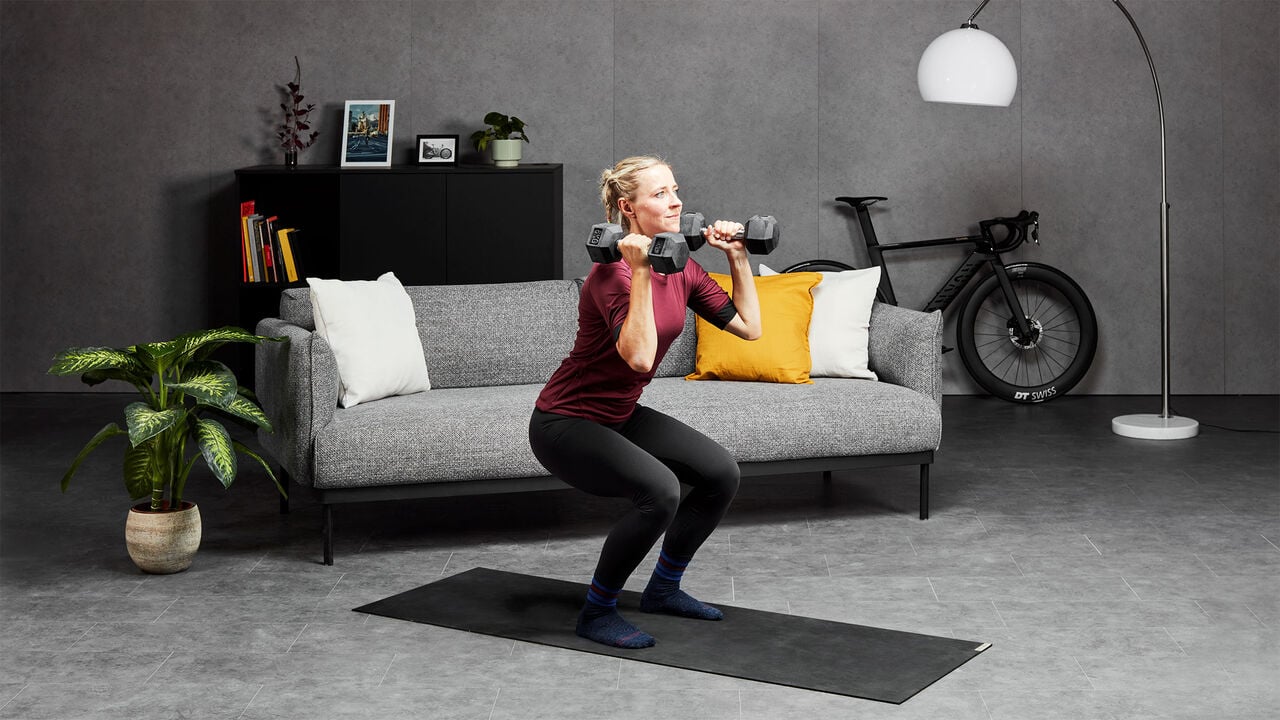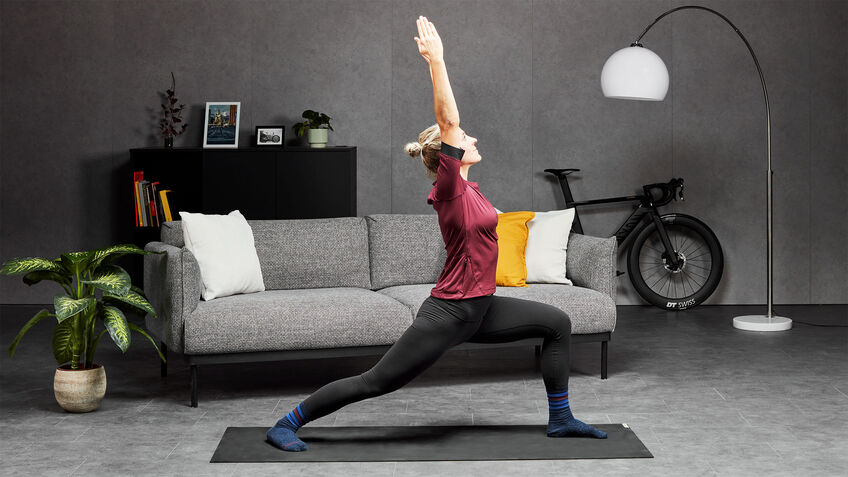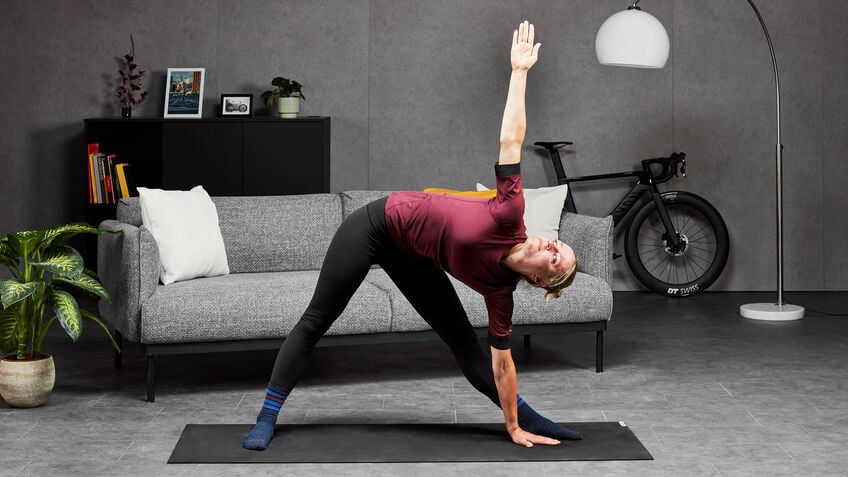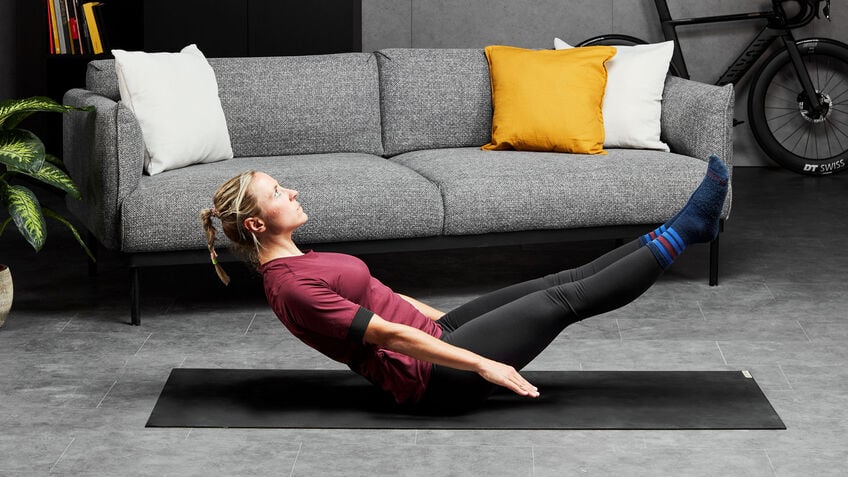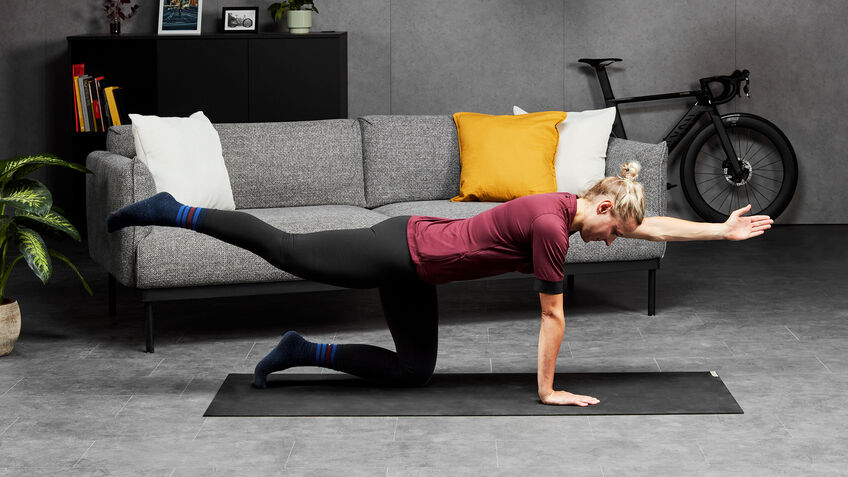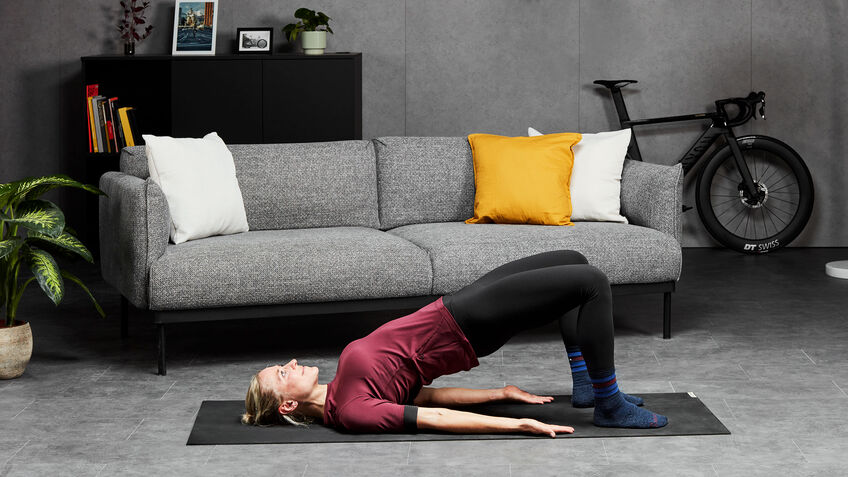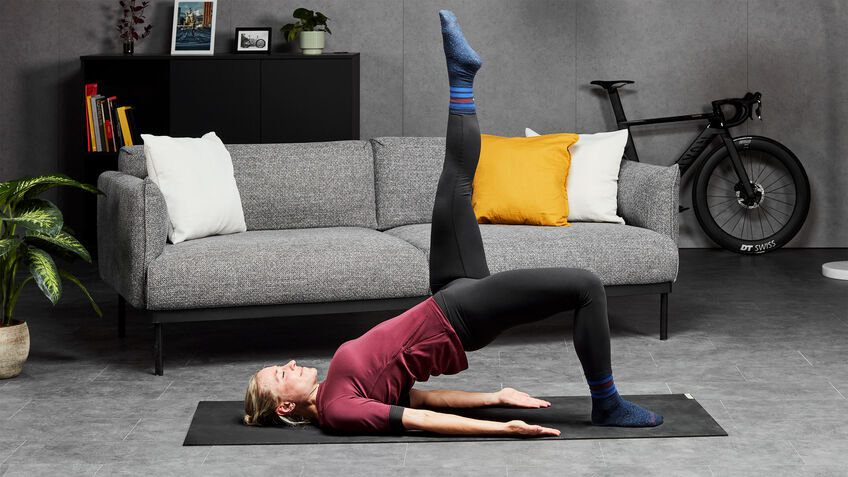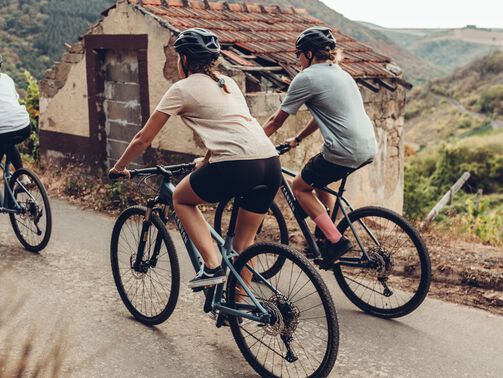A cyclist's guide to strength training
Get stronger on the bike by incorporating these strength exercises into your training.

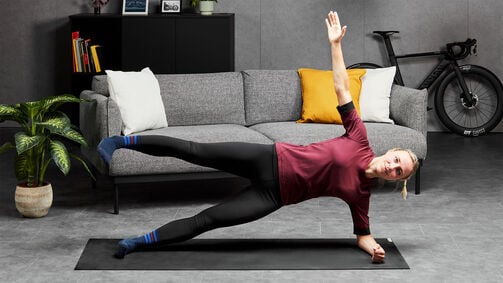
Strength training has many benefits especially for cyclists. Incorporating strength and weight exercises into your regular training will see your performance and recovery improve.
The rise of marginal gains and high competition mean racing cyclists regularly include strength training as part of their training plans. Studies show that off the bike strength and conditioning work makes you faster (1).
Year-round riding requires year-round training and that includes weights and building strength. Good body strength takes time, so you need to be consistent in order to achieve results. If you've never delved into the world of strength training, you might think it's just a case of "leg day" every day. Squats, hamstring curls, lunges and deadlifts are all well and good but they're the least of your worries.
Let's take a look at what strength training should look like for cyclists.
What are the benefits of strength training for cyclists?
The main aim of strength training is to support the muscles and bones that undergo the most pressure and endurance while you're on the bike. Strength training also prevents injury.
Cyclists need more than just their legs to be strong and powerful while cycling. A strong core will enable you to take pressure off your hands on the handlebars, improve your posture and take in more air when you need it most.
Strong shoulders, arms and neck will reduce fatigue over longer distances or more technical terrain. Hip flexors, glute exercises and thigh strength go a long way in supporting your legs, which are arguably the most important body part for cyclists.
One way of picturing these benefits is to consider your fitness as a pyramid. In their book "Strength and Conditioning for Cyclists", Phil Burt and Martin Evans (two of Britain's best physiotherapists who have spent much of their careers working with the country's best cyclists) explain the concept of a stable pyramid (2).
"Cycling fitness, and all conditioning, can be thought of as a pyramid," they write. "Unfortunately, for a huge number of cyclists, including, until fairly recently, top-level elite riders, the capstone was all they really focused on, with little regard for the crucial layers below."
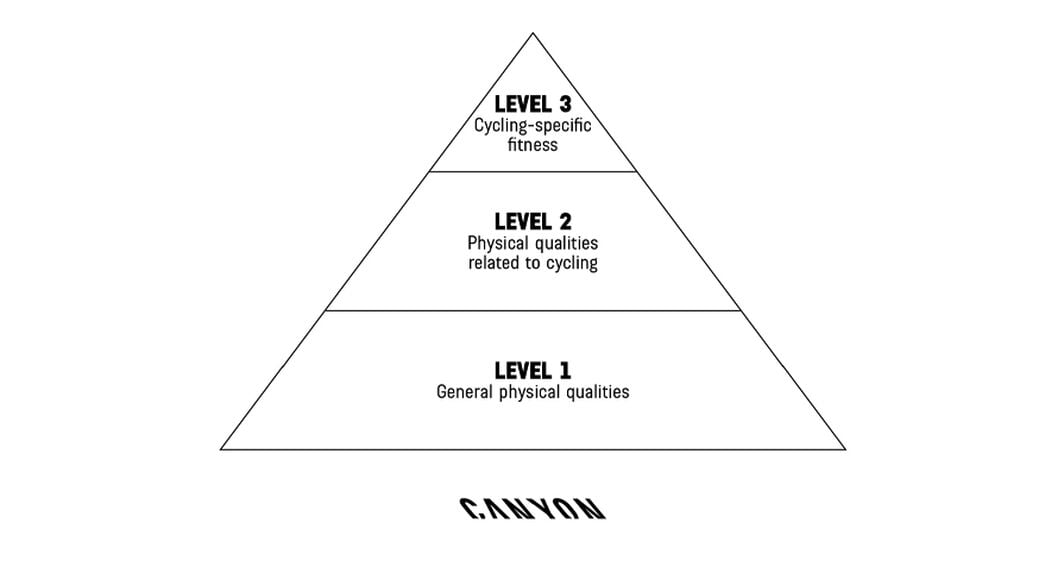
A stable pyramid has three layers:
- Level 1 = the largest layer is all about general physical qualities which includes range of movement (ROM) and control.
- Level 2 = physical qualities related to cycling but not necessarily developed on the bike.
- Level 3 = the smallest layer is the cycling-specific fitness that you develop on the bike.
One of the best unspoken benefits of strength training is the fact you can do it all from the comfort of your own home. While some people prefer a gym setting, this can be intimidating for others. Affordable home workout equipment is readily available to encourage more people to build a stronger body and look after their long-term health.
What are the best strength exercises for cyclists?
The best strength exercises for cyclists include range of movement and control exercises such as planks, leg lifts, burpees, weighted exercises and squats. Combine these into your workout and you'll be well on your way to a strong and powerful body.
Increasing and improving your range of movement is important for injury prevention as well as honing your position on the bike.
There are two ways of correcting any range of movement issues:
- Foam rollers, trigger point balls and peanuts e.g. hamstring and quad rolls using a foam roller, glute massage using a ball.
- Stretching
Regular and consistent stretching sessions will ease any tight muscles and extend your range of movement. In turn, this will reduce the chance of you becoming injured.
Developing your range of movement will improve your aero position on the bike. Aggressive time trial positions are not easy to hold without a high range of movement and good flexibility. Being able to perform and achieve results in this position requires a lot of time dedicated to these exercises.
It's one thing to increase your range of movement but it's another to have control through this range. If you don't have control through these movements, you may end up with lower back pain and longer term injuries.
Top 5 strength exercises for cyclists
1. Planking
Planks are perhaps the easiest exercise to start with as they just use your own body weight. Planking is a great exercise for lower back pain but it's incredibly effective at increasing your core and shoulder strength.
Variations will further test and improve your strength. Try lifting one leg up or extending one arm forward.
Begin with holding a plank for 30-60 seconds aiming to increase this time up to 90 seconds during the off-season.
Cyclists' hip flexors are notoriously troublesome (tight) unless you target them with specific exercises. Use your workout to incorporate leg lifts which target the hips and torso.
Lie flat on a mat with your hands either side of your body. Lift your legs in the air and gradually lower them to the ground again. If you're feeling good, try doing leg lifts with your hands above your head for an extra challenge.
Do around 20 reps per set and aim for between 3 and 5 sets. Important here is control through the movement.
Burpees come with a bad reputation, but there's a place for them in your strength training plan. The burpee is an amazing full body workout that uses your arms, legs and torso to achieve more power when you're cycling.
Burpees will get your heart rate racing, so make sure you've got a bottle of water nearby for afterwards.
Aim for 10-20 reps with up to 5 sets.
Your own body weight is a great starting point for strength training. After a while, you may want to increase the weight during your workout.
Dumbbells and kettlebells are useful aids for increasing your strength. Always remember to start weight lighter weights and progress to heavier ones over time. Focus on your technique (strong core, straight back, use your hips) rather than repetitions and weights.
Include some of these weighted exercises into your workout:
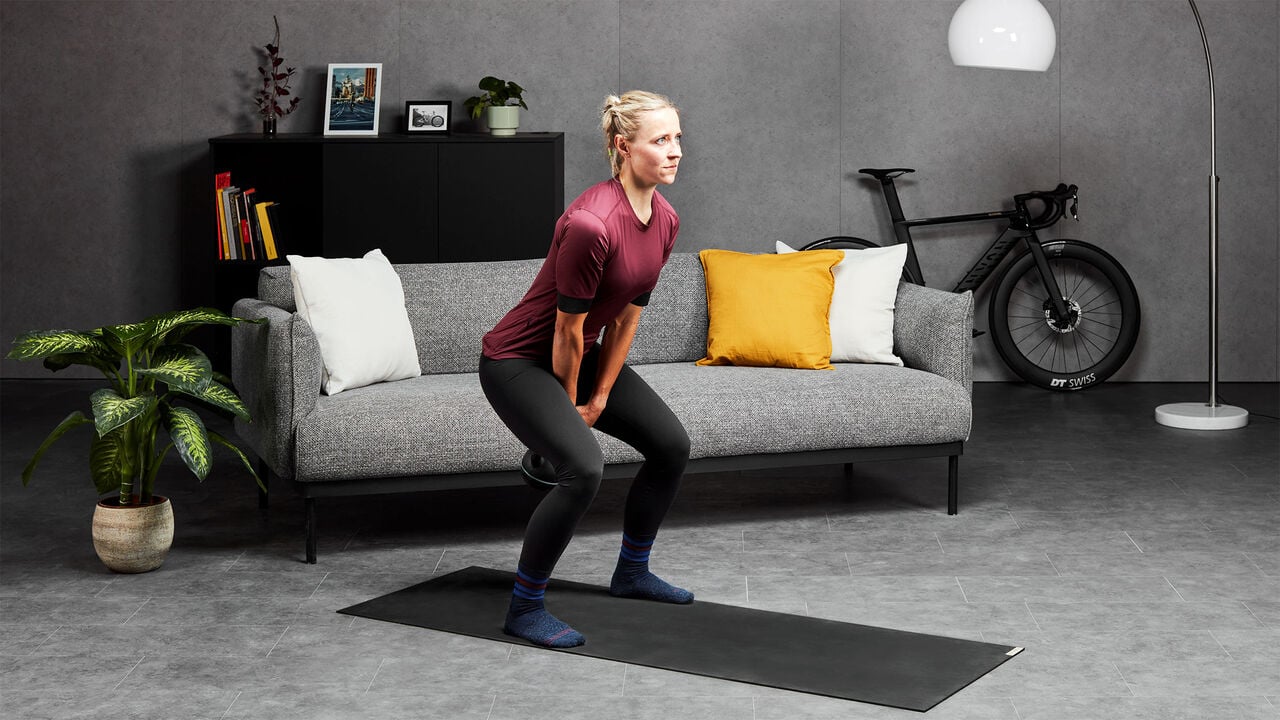
Kettlebell swings
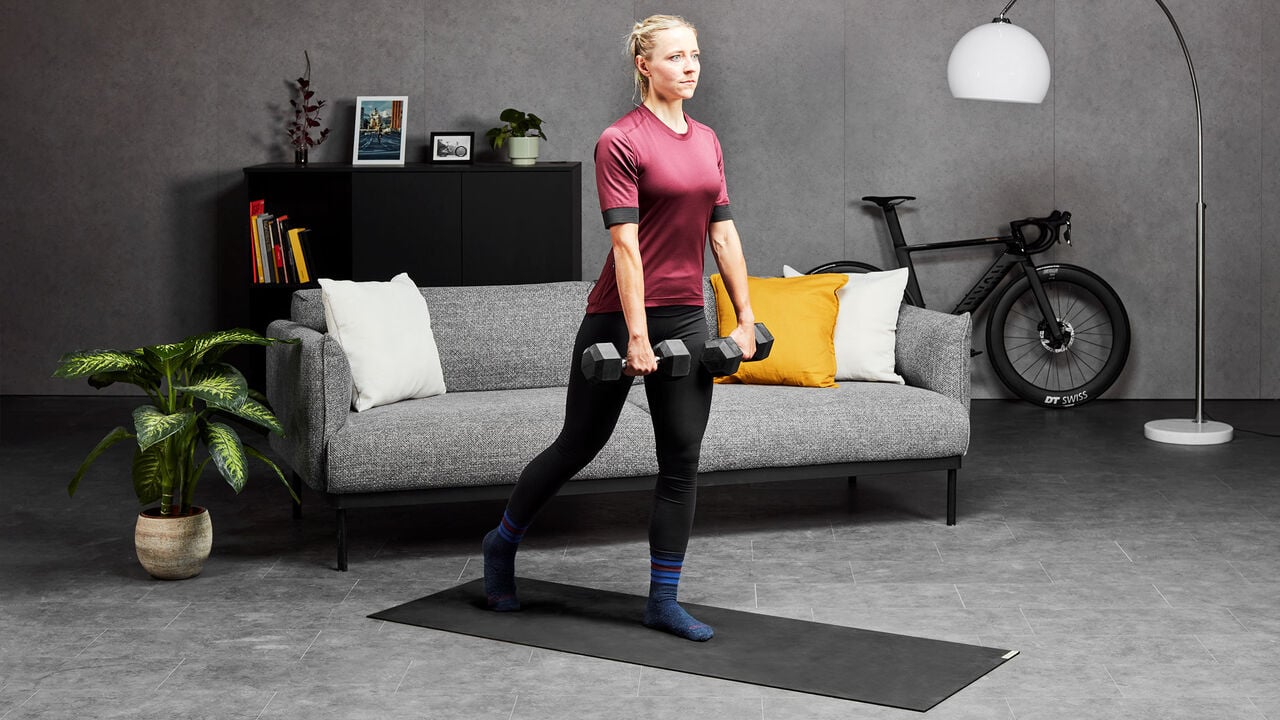
Single leg deadlifts
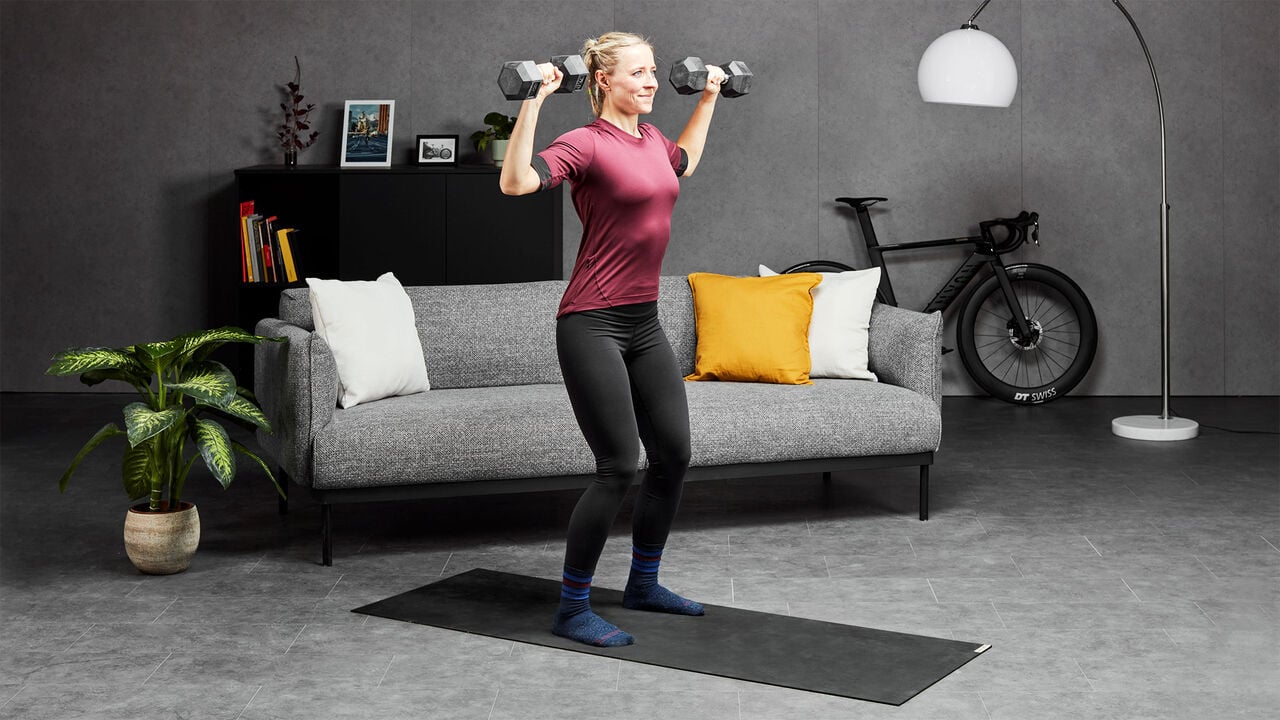
Dumbbell squats
A lot of the exercises mentioned in this article feature in many yoga and pilates classes. Classes are a good way to ensure you dedicate the time to your practice. In many cases, the classes will focus on a particular area such as hips, lower back or core. One-to-one sessions can benefit you as you get started and can help you identify any niggles before they worsen.
Weight training for women: why should you try it?
Weight training is recommended especially for women. This is due to the fact muscles naturally start to deteriorate after the age of 30.
Studies have shown that strength training helps prevent osteoporosis (3) and is beneficial for post-menopausal women with the condition (4).
A lot of early research on the pros and cons of strength training only included male test subjects, however a lot of recent data concludes that women's cycling performance can be improved through strength training (5).
Our advice: give it a go!
Start your strength training journey today
Now that you have an overview of the benefits of strength training, it's time to get down to business. Find out where your weaknesses are and begin addressing them using our suggested exercises. Phil Burt and Martin Evans' book is a useful resource which you can refer to as you go from strength to strength.
We recommend seeking professional advice when it comes to strength training. Technique is important. Poor form could result in injury.
-
Mujika, I., Rønnestad, B. and Martin, D., 2016. Effects of Increased Muscle Strength and Muscle Mass on Endurance-Cycling Performance. International Journal of Sports Physiology and Performance, 11(3), pp.283-289.
- Burt, P. and Evans, M., 2018. Strength and conditioning for cyclists. Bloomsbury, pp.7-14
- Going, S. and Laudermilk, M., 2009. Osteoporosis and Strength Training. American Journal of Lifestyle Medicine, 3(4), pp.310-319.
- Mosti, M., Kaehler, N., Stunes, A., Hoff, J. and Syversen, U., 2013. Maximal Strength Training in Postmenopausal Women With Osteoporosis or Osteopenia. Journal of Strength and Conditioning Research, 27(10), pp.2879-2886.
- Vikmoen, O. and Rønnestad, B., 2021. A Comparison of the Effect of Strength Training on Cycling Performance between Men and Women. Journal of Functional Morphology and Kinesiology, 6(1), p.29.
Did this article help?
Thank you for your feedback
